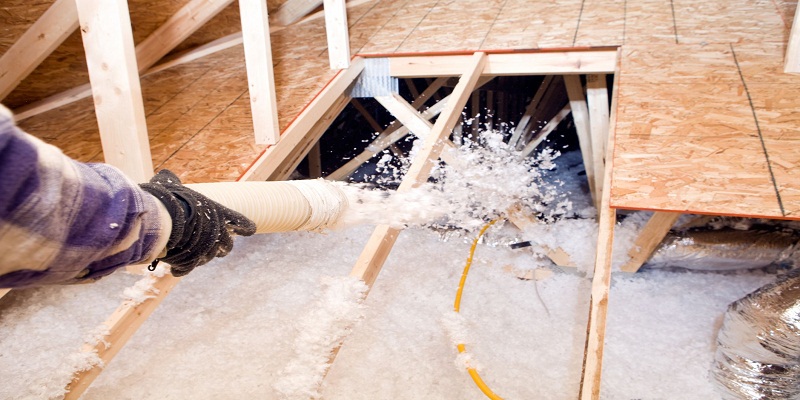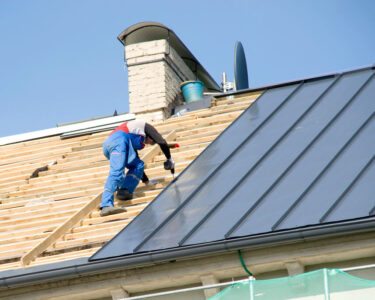Attic insulation helps to protect against heat loss in a very simple and cost-effective way. Spray foam insulation is effective both against humidity and extreme weather conditions. Attic insulation soil with aromatic foam are insulated accordingly with what a contractor recommends.
Most homeowners go for roofing contractor preferences as they have more experience in this field. Roof tiles generally have vents to maintain air circulation and prevent a dangerous increase in heat and humidity. The roof of the building is saved from heat loss and the home remains comfortable in summer as in winter without too much use of energy.
The spray foam for attic insulation is sprayed between the beams on the attic floor and this helps to seal all the cracks and voids with air leaks in the attic floor. The rest of the attic can remain uninsulated and help dissipate the excess heat or cold through the air vents and eaves. This is the method most often used, but it is not the best one as the attic cannot be used for any other purpose due to the extreme temperatures that prevail there.
The contractor applies foam insulation to the roof of the loft by laying on the underside of the deck. The foam is sprayed between the beams and along the edges of the soffit and the ventilated gables. The cracks in the attic roof are sealed against air leaks. This keeps the temperature in penthouses constant and allows the room to be used.
It is normal to have vents in the attic, so that air can keep moving and prevent moisture from condensing inside the building. This type of moisture can damage the building and insulation. This is one reason why the experts are quite against putting the insulation below the roof side of the attic. The debate is still not conclusive about it.
In the summers, penthouses with vents can still be very hot while attic temperatures can be measured well above 100 degrees. The air conditioning ducts, vents and heating ducts are all present in the attics and these will have to run at such high temperatures. More work increases the overall household energy consumption. Moisture also accumulates due to the difference in high temperature and this can damage the lofts if not attended. Thus, it may be a safe practice to apply the insulation of the attic’s ceilings from inside and this isolates the entire attic against the heat in summer. This makes the attic tolerable with moderate temperatures.
The temperatures in attic now matches those of the rest of the house and helps to maintain the equipment. If you talk to roofing contractors, they will not recommend such an idea as they fear that it damages roofing shingles as there is a greater risk of overheating. They also claim that woodworking can be damaged as wood needs a bit of room to breathe.
You may have heard of furniture manufacturers arguing that wood should be allowed to breathe as it has the highest risk of damage due to the moisture present in the wood. If you consult with tile manufacturers, they are quick to say that their products have been designed for protection against inclement weather and the foam insulation spray will not damage in any way. This is completely contrary to the material for roofing contractors to discuss about the attic insulation. When you are ready for attic insulation, go through the best attic insulation reviews at thereviewgurus.com and choose the finest option among all.
Examining some popular insulation choices may help you decide which type of insulation to use in your home. As fibreglass is the most common type of insulation for residential purposes, it is the best material to use as a benchmark.
Fibreglass
It is applied as a roll, or more frequently as batts cut to fit snuggly between studs and stapled in place. It is readily available, and can be installed by a professional or by a committed do-it-yourself type homeowner. Fibreglass is a mechanical irritant, so short term irritation of the mouth, nose, and throat are frequent symptoms of exposure, as are itchy skin and eyes. It is indicated that there are no known health effects associated with long term contact with fibreglass, contrary to the previous findings of American studies suggesting fibreglass may be carcinogenic.
Spray Foam
Spray foam is liquid polyurethane-based. As such, there may be health risks associated with this type of insulation in its liquid form. This type of insulation can only be installed by a professional with adequate training. When spray foam is being applied, the sprayer and anyone else in the vicinity must wear an appropriate class of respirator. A roped off area is suggested around the space to be sprayed. Once the insulation has cured, there are no known health risks to mention. It is, however, worth mentioning that the solvents used to clean the equipment used in spray foams application can cause irritation to skin, nose, and throat. Spray foam is among the safest materials to insulate your attic with.
Blown in Cellulose
Cellulose is made from 75 to 85 percent recycled newsprint. Any concerns pertaining to its use as an insulator stem from the chemicals used to make it flame retardant and resistant to mold and fungus. Since these chemicals are dealt with before the insulation arrives at the home being insulated, they are of little concern. During the application of blown in cellulose insulation, it is recommended that a dust mask be worn to reduce the amount of airborne particles inhaled, which can be a mild irritant to the installers.
Insulated Panels
Insulating your home with insulated panels is the safest method available for both the installation team and the homes occupants. There are no sprays or dust particles to contend with, as the panels are pre-constructed and nailed, screwed, glued, or otherwise adhered to the walls, ceilings, or floors. Installation can be done by the homeowner or a professional with high quality results.
There are several very safe options to insulate your home and incur very attractive reductions in your monthly energy bill. With a little knowledge of how each is applied and who can install them, a cost effective decision should be much easier to make. Please, click here to learn the best available products for attic installation.






